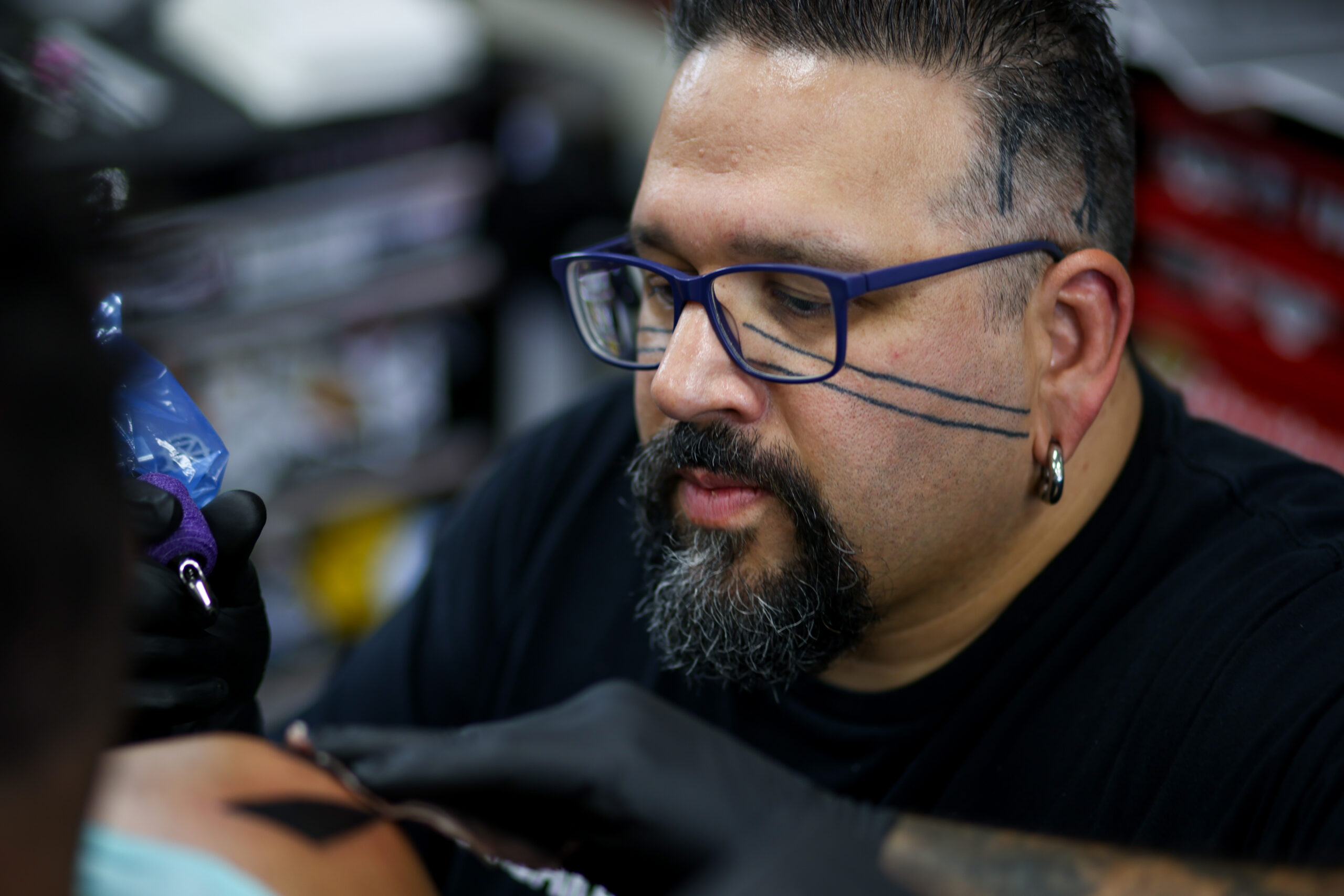Revival of Indigenous Skin Markings Paints a Picture of Beauty and Resilience
For Dion Kaszas, tattooing is a revival of ancestral traditions and reclaiming of cultural identity. A professional tattoo artist with Nlaka’pamux, Métis, and Hungarian roots, Dion has dedicated his career to bringing Indigenous blackwork skin marking practices back to life.
Growing up in Salmon Arm, British Columbia, just outside his ancestral territory, Dion lived close to his roots in the Lower Nicola Indian Band in Merritt before making the move to Nova Scotia for work.
Often escaping the stresses of life through art, Dion initially became interested in tattooing during his very own first tattoo. Once admiring his tattoo artist’s sense of freedom, he’s now been tattooing for nearly 15 years.
Today, he specializes in large blackwork and tribal tattoo designs and what he calls Nlaka’pamux blackwork—a contemporary manifestation of ancestral skin marking traditions once lost to colonialism.
“It allows our ancestral visual language to walk on the earth and to be visible to us on the everyday like it was back when the ancestors lived in pit houses,” he says. Back then, every member of the community had at least one skin marking, he shares.
Outside of the tattoo shop, Dion is creating a Nlaka’pamux Visual Dictionary containing close to 2,000 ancestral design symbols and motifs to inspire various forms of Nlaka’pamux art.
Reflecting on the importance of funding programs like Support4Culture on the revival of Indigenous tattooing in Canada, Dion says it’s been essential to the whole movement.
“It’s essential to the reconciliation of us as Indigenous people to the rest of Canada, as well as to ourselves,” he adds.
For Dion, his art helps him express the Nlaka’pamux heritage in a contemporary context.
“When we look down, we can actually see the mountains that are in our territories. We can remember the blades of grass that we see every summer,” he says. “We remember that’s where we’re from, and we belong.”

